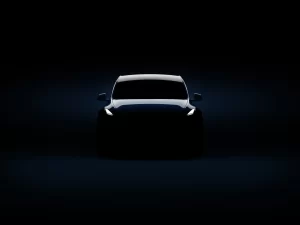
Electric and Hybrid Car Technology
As gasoline prices increased dramatically during the late 80s, engineers started searching for new ways to tackle it – eventually coming up with the hybrid car as their solution.
An electric hybrid uses an electric motor to capture energy lost during deceleration through regenerative braking and then store that electricity in its battery pack, enabling it to travel a short distance on pure electricity power alone.
Full Hybrids
Full hybrid cars can run on electricity alone for short distances at speeds up to 30mph, petrol alone or both (using an internal combustion engine to charge their electric motor), or both together – further improving efficiency by turning brake kinetic energy into power for the motors and battery – further increasing fuel economy.
These systems have proven popular with drivers looking to reduce emissions and save money, without making the jump to an electric vehicle (EV). Some hybrid models even feature range extender engines for long distance driving.
These vehicles, known as series hybrids, include models such as the BMW i3 with its plug-in range extender petrol engine.
Split Hybrids
Hybrid vehicles combine a gas engine and electric motor for maximum versatility. At low speeds (up to 30 mph) under light loads, hybrids can run entirely on electric power alone; their engine kicks in when more power is needed for climbing hills or quick acceleration. Furthermore, hybrids feature regenerative braking systems which generate electricity back into their batteries recharging systems for even more energy saving capabilities.
Parallel hybrid systems combine an internal combustion engine and electric motor to drive wheels either independently or together, depending on driving needs, using mechanical linkages connected by transmission-mounted mechanical linkages or clutching mechanisms. This design offers more flexibility than series hybrid systems while improving economy over full hybrid drivelines; for instance, Peugeot 3008 Hybrid utilizes this type of driveline.
Integrated Hybrids
Full hybrid cars feature an integrated drive system incorporating both an electric motor and gasoline engine, which are combined into one power source through either an automatic, manual, or continuously variable (CVT) transmission. Most hybrid designs utilize parallel designs.
At highway speeds, only then should the gas engine engage; this allows for smoother acceleration experiences with more powerful acceleration potential and reduces vibration when engaging conventional gasoline-engine cars.
These hybrid vehicles use regenerative braking technology to recharge their batteries while shutting off their engine at idle, helping drivers reduce fuel consumption without incurring extra expense or weight from an additional hybrid powertrain. Toyota remains at the forefront of this technology with models like Prius and Corolla featuring hybrid drive systems.
Mild Hybrids
With gasoline prices reaching record levels, many drivers are turning towards hybrid technology as an option. Unfortunately, finding an affordable hybrid car may prove challenging.
Mild hybrid systems use a smaller electric motor to assist the engine while its battery stores energy from regenerative braking, making driving one nearly invisible in everyday use. You might forget you’re driving one! It won’t make much difference to your driving experience.
These cars differ from full hybrid or plug-in hybrid vehicles in that they do not require special charging infrastructure to function, making them an attractive option for drivers looking to save money without fully investing in an electric vehicle. On average, hybrid systems provide up to 20% greater fuel efficiency over conventional petrol or diesel engines.
Plug-in Hybrids
Hybrid vehicles provide drivers with the flexibility of short distance electric driving and longer journeys using gasoline power, making it the ideal solution for drivers that must remain mobile all day yet desire fuel-efficiency of an EV.
Newer models of electric vehicles are more advanced than older ones and offer longer range. Unfortunately, owning and operating these models requires additional steps – like having access to a plug-in charging station at home – something many drivers don’t possess.
Although Wrangler 4xe and RAV4 Prime PHEVs have gained much of their success due to the introduction of electric car charging infrastructure, they will take time for them to become mainstream. As electric cars improve and charging infrastructure expands further, these could become an excellent alternative to petrol/diesel vehicles currently dominating the market.


